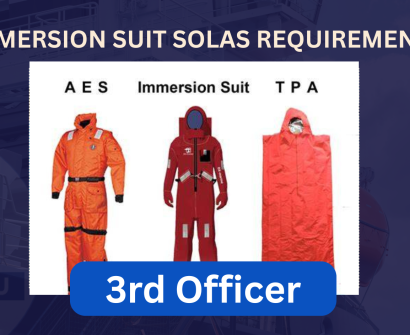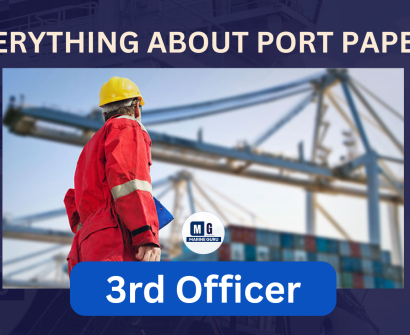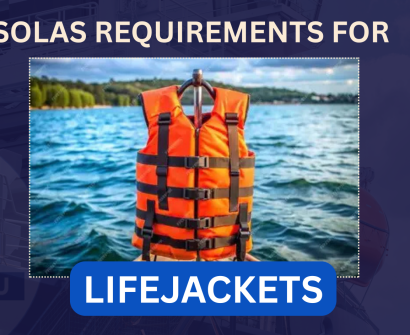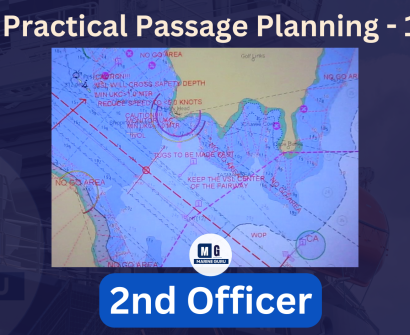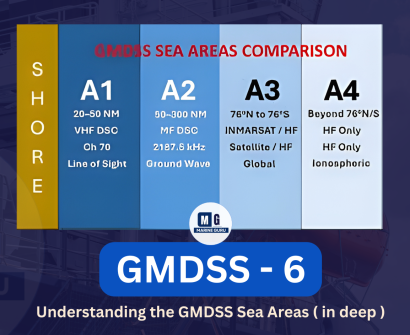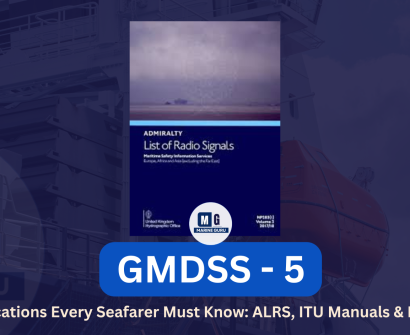How to Take Over as a Fresh Third Officer on a Ship: Complete Step-by-Step Guide
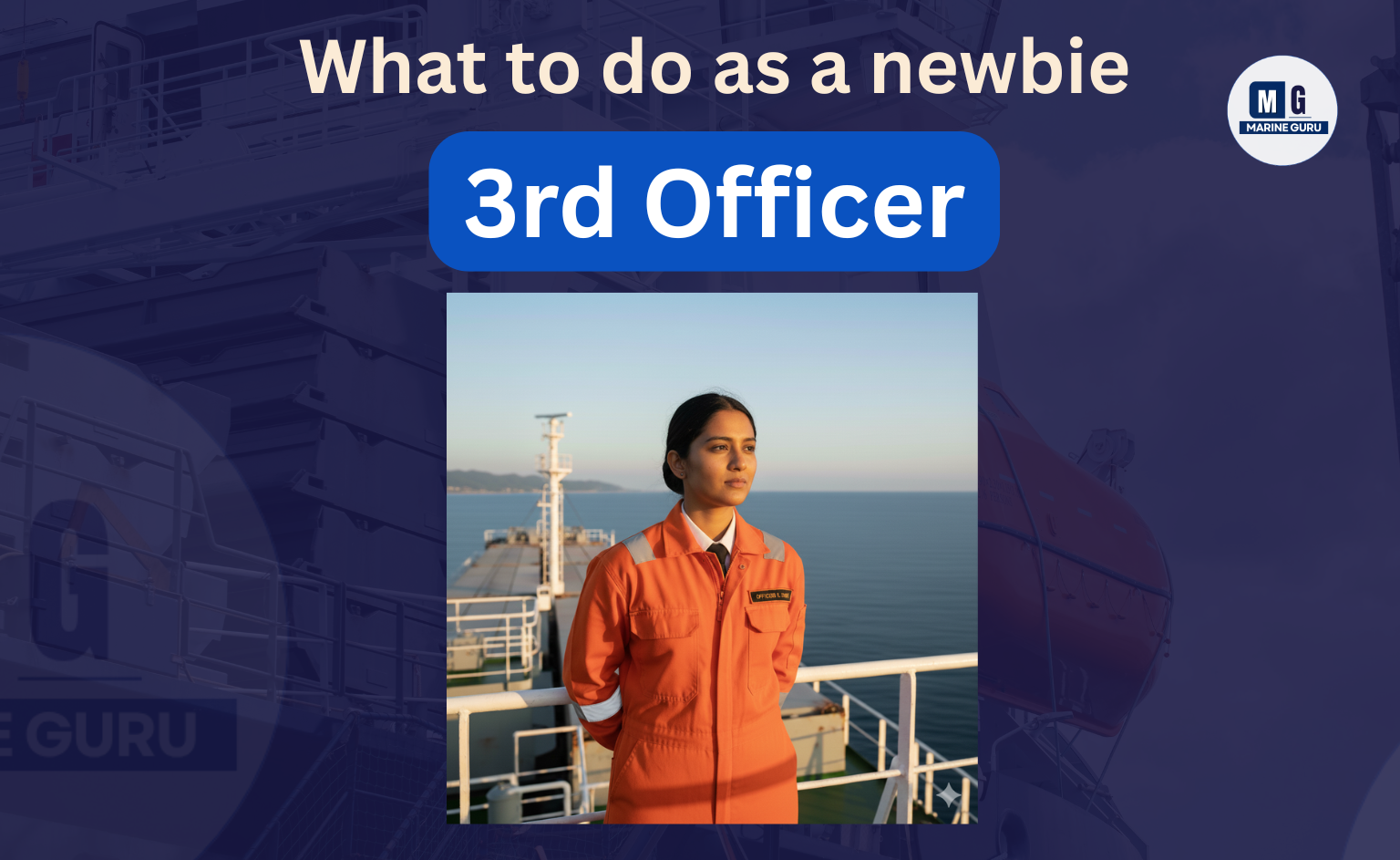
Becoming a Third Officer (OOW – Officer of the Watch) is one of the most crucial transitions in a seafarer’s career. You’ve passed your exams, signed your contract, and now you’re joining your first vessel as a certified officer. But what happens when you actually join the ship and take over the duties?
This guide is designed for fresh Third Officers (Deck Officers) — especially those joining for the first time after exams — to help them understand how to take over responsibilities systematically with clarity and confidence.
What a Third Officer takes care of :
Navigation and bridge watch
- Stand OOW sea watches, maintain safe navigation, collision avoidance, lookout management, and bridge resource management practices as directed by the Master.
- Conduct position fixing, compass error checks, logbook entries, and use/routine checks of navigational and meteorological equipment while assisting with pre-arrival and pre-departure tests.
- Assist 2/O with chart and publication corrections, passage plan support, List of Lights/Radio Signals tasks, and maintain flags, shapes, and sound signals readiness for port entries.
Safety equipment (LSA/FFA) in-charge
- Inspect, maintain, and document all LSA and FFA on deck under Chief Officer supervision, including lifeboats, liferafts/HRUs, lifejackets, lifebuoys, immersion suits, pyrotechnics, line-throwers, SCBAs, EEBDs, extinguishers, hoses, hydrants, fixed systems, and fireman’s outfits.
- Keep PMS/records up to date, manage spares and requisitions, track servicing/expiry dates, and keep muster lists, safety manuals, and posters current and correctly displayed.
Cargo, port and anchorage duties
- Assist Chief Officer with cargo/ballast operations, maintain in-port and anchorage watches, monitor safety, security, and communications with terminal/port control as assigned.
- Lead or assist at mooring stations, commonly in charge aft with handheld VHF, coordinating ABs and equipment readiness during berthing/unberthing as per company practice.
Drills, training, and inspections
- Run or assist with abandon ship, fire, enclosed space, and security drills; train crew on LSA/FFA usage; prepare for PSC, vetting, and third-party audits on bridge and safety areas.
- Prepare checklists and records for drills, pre-arrival tests, and audit readiness; rectify noted deficiencies promptly and coordinate with department heads for closures.
Documentation and records
- Maintain deck logbook, bell book entries relevant to the watch, checklists for arrivals/departures, navigational test records, and safety equipment registers aligned with SMS.
- Support paperwork for port calls, inspections, and internal reporting; escalate concerns to the Master and Chief Officer when issues affect safety or compliance.
Communications and distress readiness
- Assist the Master with safety, urgency, and distress communications via GMDSS during emergencies or as directed; ensure signal flags and shapes are displayed correctly in port and restricted navigation situations.
- Coordinate portable VHF allocations appropriate to duties and ensure correct channel use and battery readiness for operations and emergencies.
Meteorology and reporting
- Maintain and check meteorological instruments and assist with required weather observations and reports during the watch, contributing to safe route monitoring.
- Record weather, sea state, barometric pressure, visibility, and navigational occurrences in logs consistent with OOW best practices and company requirements.
Handover and takeover
- On joining, take over LSA/FFA registers, inventories, flags locker, portable VHF, and any pending service schedules from outgoing 3/O; verify PMS status and immediate compliance gaps.
- Brief relief officers thoroughly at watch and duty handovers, ensuring continuity of navigational intentions, hazards, equipment status, and standing orders compliance.
General teamwork and learning
- Understudy the Chief Officer for cargo/ballast and the Second Officer for navigation/publications, proactively building competence for the next rank as part of structured progression.
- Mentor cadets during watches and safety rounds, reinforcing safe systems of work and company procedures in daily routines and drills as directed by senior officers.
Port Papers, Bond – Provision and Others
- Prepare Port Papers at each arrival / departure which needs to be sent through Master to the agent. – Click here to know all about it
- Maintain Bond Store and keep record of Provision Store ( with the help of Chief Cook )
- Help Captain in Salary Disbursement.
Typical daily routine highlights
- Bridge OOW for assigned sea watches with full logkeeping, fixes, and checks; pre-watch and post-watch equipment verifications as per checklist.
- LSA/FFA inspections by plan, closing out PMS tasks, updating records, arranging servicing, and preparing requisitions for spares and expiring items under Chief Officer oversight.
Step 1: Understanding the Situation When You Join
When you first join the ship, there can be two possibilities:
- Your reliever (previous 3/O) is still onboard.
- Your reliever has already signed off due to medical or other issues.
If the reliever is present, you’ll get a proper handover.
If not, you must rely on documentation and the Chief Officer’s guidance.
👉 Example:
When I joined my first ship, the previous Third Officer had already signed off due to medical issues. It was a paperless vessel (software-based documentation), so I had to learn both digital and manual systems on the go.
Step 2: Immediate Documentation to Check
Upon joining, your first focus should be Port Papers and Crew Documentation.
These papers are often handled by the Third Officer, especially during port arrivals and departures.
✅ Key Actions:
- Locate the “Port Papers” folder for the current port (e.g., Chennai).
- Check all documents: crew list, declaration of health, vaccination list, agent correspondence, etc.
- Update the Crew List (remove signed-off crew and add new ones).
- Keep copies of Crew Particulars and Seamen’s Book pages ready.
- Check arrival vs. departure documentation — the previous officer’s folder may only contain arrival papers.
Equipment/Software Example:
If the company uses ShipNet or Sertica PMS, ensure that the latest versions of crew documents are updated in the system.
Step 3: Updating Company-Related Paperwork
Every company has internal documentation for:
- Safety familiarization
- Certificates
- Planned Maintenance
- Reports & Inspections
Important Documents:
- Safety Familiarization Record
- Conducted by the Safety Officer (usually the Chief Officer).
- Keep the form signed by the master as proof of familiarization.
- Example: Fill details of LSA/FFA familiarization with location and instructor name.
- PMS (Planned Maintenance System)
- Check which software your company uses (e.g., AMOS, ShipNet, TM Master).
- Verify which tasks are due for FFA, LSA, or navigational equipment.
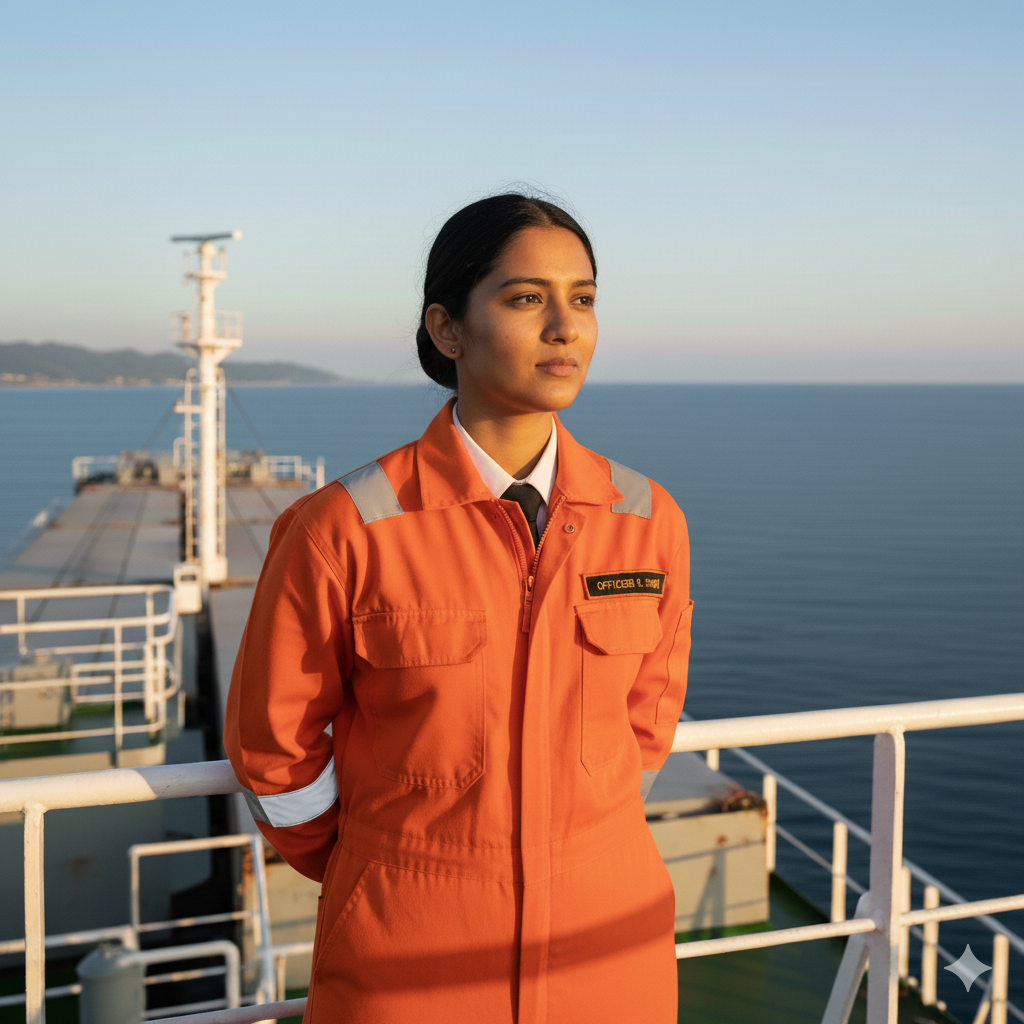
Step 4: Inspection Reports (Weekly, Monthly, Quarterly)
A Third Officer’s job revolves around regular inspection and maintenance reports.
1. Weekly Safety Inspection
- Includes checks on fire extinguishers, emergency lights, lifebuoys, etc.
- Usually done every Saturday.
- Have the weekly form ready with date, signature, and remarks.
🧰 Example:
- Check fire extinguishers for pressure and accessibility.
- Verify expiry tags on CO₂ and foam units.
2. Monthly Inspection
- Covers all LSA (Life Saving Appliances) and FFA (Fire Fighting Appliances).
- Example items: liferafts, fire suits, breathing apparatus, etc.
3. Quarterly and Six-Monthly Checks
- Includes major systems like Sprinkler Testing, Fire Main Isolation Valves, and Lifeboat Drills.
Step 5: Expiry Date & Equipment Management
Maintain an Expiry Date Tracking Sheet for all LSA and FFA items:
- Lifebuoy Lights
- Pyrotechnics (Hand Flares, Smoke Signals, Parachute Rockets)
- Line-throwing apparatus
- Medical Kits
- Immersion Suits
- Lifeboat Rations & Water
- SCBA Cylinders
Example:
| Equipment | Expiry Date | Location | Action |
|---|---|---|---|
| Parachute Rocket | Aug 2026 | Bridge Wing | OK |
| Lifeboat Water Pack | Feb 2025 | Starboard Boat | Replace |
| SCBA Cylinder | Dec 2025 | Fire Station | Due for Hydro Test |
Equipment Tip:
Always keep spare lifebuoy lights, smoke signals, and D-cell batteries in the Fire Station locker.

Step 6: Familiarize with Certificates and Folders
Every vessel has multiple certificate folders, typically organized as:
- Ship Certificates (COC, DOC, Safety Construction)
- Safety Equipment & Radio Certificates
- Gear and Cargo-related Certificates
Check:
- Latest validity dates.
- Mark upcoming renewals in red on Excel.
- Confirm who maintains which certificate (Chief Officer vs. Master vs. 3/O).
Step 7: Fire Fighting System Handover
Ask your reliever about:
- Fire Main Line Layout
- Emergency Fire Pump Location (Engine Room or Forward)
- Fire Hose Lockers (check for proper coupling and rubber gaskets)
- Hydrant Caps & Chains (keep spares)
- Portable Foam Applicators (understand operation and location)
- Fire Station Inventory (Fireman Outfits, SCBA, W/T sets, helmets, axes)
Equipment Used:
- Portable CO₂ and Foam extinguishers
- Fireman Outfit with SCBA set (Scott or Dräger models)
- Portable foam applicator units (15L or 20L)
Step 8: Life Saving Appliances (LSA) Handover
Items to Check:
- Lifebuoys
- Number, location, and markings.
- Condition of lifelines and retro-reflective tapes.
- Lifebuoy Lights
- Check expiry and battery life.
- Keep spare batteries and seals onboard.
- Lifejackets
- Number per cabin and location.
- Check whistles, lights, and reflective tape condition.
- Immersion Suits
- Pressure-tested annually.
- Check expiry of sealing kits and D-cell batteries.
- Lifeboats & Rescue Boats
- Last annual inspection date.
- Check painter lines, hydrostatic release unit, food/water expiry, and first aid box contents.
- Verify fast rescue boat lowering gear and engine status.
Example:
When inspecting lifeboats, open the inventory list and confirm:
- 3 rocket parachutes
- 2 hand flares
- 1 smoke signal
- 1 radar reflector
- 1 first aid kit
- 3L water rations per person
Step 9: Bridge Equipment & Passage Planning Setup
Before sailing, conduct a Bridge Checklist with the Captain.
Check:
- ECDIS updates and route monitoring.
- Compass error corrections.
- Radar and ARPA settings.
- NAVTEX and AIS working status.
- Pilot Card ready for next port.
Example Equipment Used:
- ECDIS: Transas, JRC, or Furuno
- Radar/ARPA: Kelvin Hughes, Sperry
- Echo Sounder: JRC FURUNO
- Anemometer: Wind speed and direction unit (bridge top)
Step 10: Additional Systems to Verify
- Sprinkler Systems: Last tested and flushed.
- International Shore Connection: Check physical presence and gasket condition.
- Fire Wallets: Updated at all access points.
- SOPEP Equipment: Booms, pads, drums, and buckets complete.
- Portable Gas Detectors: Calibration dates valid.
Life Saving Appliances (LSA) under 3rd Officer:
* Lifeboats (enclosed, rescue boats) and launching arrangements
* Liferafts and their hydrostatic release units
* Lifebuoys (with lights, smoke signals, and lifelines)
* Lifejackets (with lights and whistles) for all persons on board
* Immersion suits and thermal protective aids
* Emergency Position Indicating Radio Beacons (EPIRBs) and Search and Rescue Transponders (SARTs)
* Rocket parachute flares, hand flares, and buoyant smoke signals
* Line throwing appliances
* Muster list and SOLAS/LSA/Fire safety training manuals and posters
* Spare batteries, bulbs, and supporting inventory for LSA
Fire Fighting Appliances (FFA) under 3rd Officer
* Fire extinguishers (of all types) throughout accommodation and deck areas
* Fire hoses, hydrants, and nozzles
* Fireman’s outfits (protective clothing, boots, helmets, gloves)
* Self-contained breathing apparatus (SCBA) sets
* Fire blankets and sand buckets
* Fire alarms and detection systems
* Fire main and emergency fire pumps
* Fixed firefighting systems (CO2, foam, water mist, dry powder, etc.)
* Emergency escape breathing devices (EEBD)
* Portable and fixed communication equipment used in fire emergencies
Additional Responsibilities
* Keeping LSA/FFA inspection and maintenance records up to date (PMS)
* Training and familiarizing crew with the use of all equipment
* Ensuring LSA/FFA manuals, posters, and muster lists are current and correctly displayed
* Planning inventory needs and raising requisitions for expiring items/spares
* Reporting deficiencies and planning for shore-based inspections or servicing as required
Common Mistakes Fresh Third Officers Make
- Ignoring expiry tracking for FFA/LSA equipment.
- Forgetting to update crew list before port.
- Not checking bridge equipment until sailing day.
- Not locating spares or asking for their storage.
- Failing to record familiarization signatures.
❓FAQs
1. What is the most important document to update immediately after joining?
Update the Crew List and Declaration of Health for port entry. Agents frequently ask for it.
2. How do I know when to replace pyrotechnics or batteries?
Check the Expiry Date Tracking Sheet maintained by the previous 3/O. Create your own Excel sheet if missing.
3. Can I do my own inspection reports?
Yes. Weekly, monthly, and quarterly inspections are the Third Officer’s responsibility.
4. What software is used for planned maintenance?
Common PMS tools: AMOS, ShipNet, TM Master, SERTICA — depends on company.
5. What should I carry onboard as a new Third Officer?
- Notepad and pen
- USB with Excel templates for reports
- Company checklist formats
- Extra passport photos and documents
- Laptop (for report entry and PMS access)
6. How can I manage everything efficiently during my first week?
Use a priority-based checklist system:
- Day 1–2 → Documentation
- Day 3–4 → FFA/LSA familiarization
- Day 5 → Bridge & Navigation Systems
- Day 6 → Safety Drill prep
🌍 Final Thoughts
Taking over as a fresh Third Officer is overwhelming — but structured preparation turns anxiety into efficiency.
If you follow a step-by-step approach — focusing on documentation, inspections, equipment familiarization, and system knowledge — you’ll not only gain the Master’s confidence but also set the foundation for your future as a responsible Officer of the Watch.
“Preparation separates an officer from a cadet — and consistency keeps you safe.”

